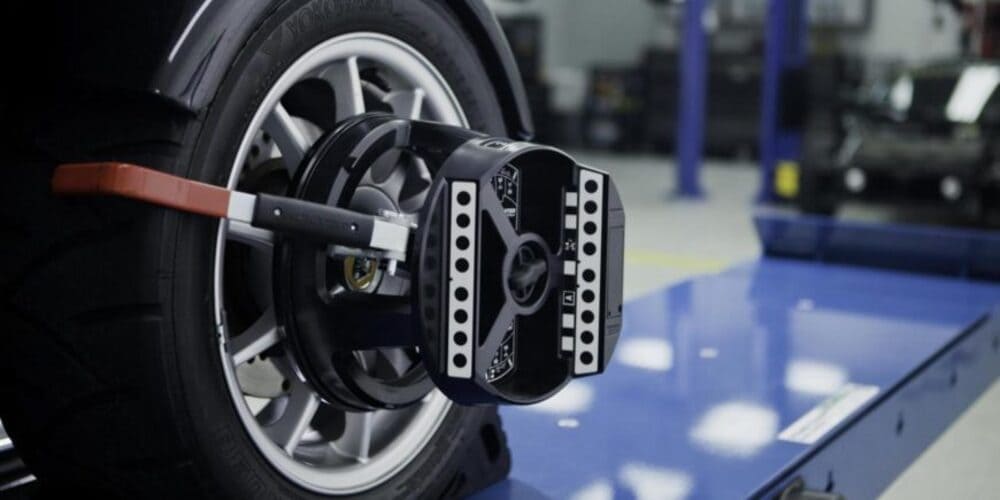
The alignment angles of a car or truck do not just change randomly for no reason. A relationship between both internal and external forces results in the altering of a vehicle’s suspension geometry. Each of the principal alignment angles, measured at all 4 corners of the vehicle, capture the state of health of its steering and suspension systems. Simply adjusting without considering why such movements are needed can result in an improper alignment and a possible comeback. Knowing why certain adjustments were required prevents mistakes and yields a more comprehensive alignment service.
LOADS
One common scenario that can contribute to significant changes in alignment and alignment issues is weight in the rear of a vehicle. Loads in the rear of a car or truck can cause changes to caster and camber. The camber and caster will become positive in the front, and if the vehicle has an independent rear suspension, the camber will become negative, and it will be toed out. This could lead to outside edge wear in the front and inside edge wear in the rear. Even a large weight on one side of the vehicle will result in the springs compressing on the left side of the vehicle. It also changes the toe and camber angles. In some cases, this can cause inner edge tire wear. If it is known that a vehicle will be operated for prolonged periods of time with an asymmetric load, it is recommended the alignment be performed with the vehicle in its loaded configuration.
WORN SPRINGS
Alignment angles of a vehicle change continuously as its suspension compresses and rebounds. The alignment angles defined by a vehicle manufacturer are usually tuned for a specific ride height. This height is a balance between tire wear, performance, and fuel economy. Active ride height is becoming more commonplace on some SUV types. Shocks and struts repair and/or replacement can be expensive and is often put off. When a vehicle’s shocks and struts can no longer support its weight or loads, the alignment angles suffer as well as tire wear and performance.
BUSHINGS
Many steering and suspension components include rubber bushings. These bushings insulate the chassis from road vibration, noise, and harshness (NVH). Extreme temperatures, ozone, and other wear issues cause these components to harden and transmit unwanted forces. Even worse, broken bushings will result in unwanted steering and handling behaviors and accelerated tire wear. ‘Clunk,’ ‘rattle,’ or knocking noises during braking, acceleration or while driving on uneven pavement can be a sign of worn or broken bushings.
Late-model vehicles also may use hydraulic bushings. Most often these are located on the control arm. A hydraulic busing has chambers through which fluid can pass at different rates depending on the suspension movement. It is possible for the bushing to fail internally with little or no external indication, but more common are fluid leaks from the bushing.
BENT COMPONENTS
Suspension components are bent by roadway damage and potholes. When a control arm, tie-rod, or strut is bent, the alignment angles of a car or truck can change significantly. Even a 1/8 inch of misalignment in toe-angle can scrub the tire bald in less than a few hundred miles.
ADVANCED ANGLES
With the incorporation of Advanced Driver-assistance Systems (ADAS), new measures of alignment are coming back into focus. This includes, but is not limited to, wheel setback and thrust angle. While most thrust angle problems can be resolved with a toe adjustment, if the vehicle is equipped with ADAS, much more precision may be required.
Courtesy of hollenshades










